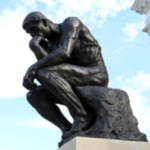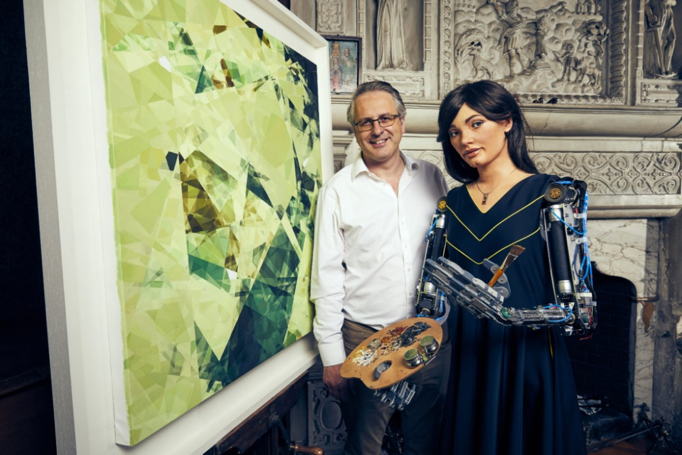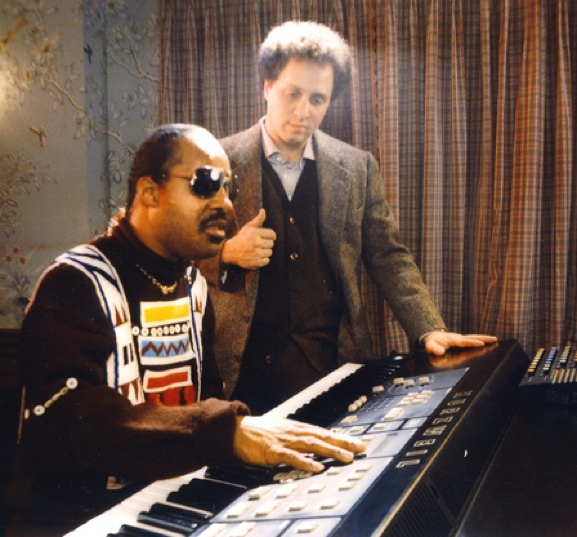Jul 24, 2023 | News
REMAPPING THE TERRITORY – VII Edition 2023-2024 – ONLINE
OBJECTIVES AND PROGRAM
August 2023 marks the 50th anniversary of the introduction – in the scientific arena – of the neologism “neuro-ethics” by Harvard neuropsychiatrist Anneliese Alma Pontius (1921-2018). Since 2009, thanks to the work of the Interdisciplinary Research Group in Neurobioethics (GdN) of the Faculty of Philosophy of the Pontifical Athenaeum Regina Apostolorum (APRA) in Rome, the term has acquired a personalist connotation.
After 15 years of research experience – and since 2017 having delved into the contexts of transhumanism, the so-called “head transplantation” in humans, robotics (roboethics), artificial intelligence (algor-ethics), neurotechnologies and current developments in virtual reality, augmented reality, and the Metaverse, from September 2023 to June 2024, the GDN will be offering a training course on neuroethics with the aim of critically “remapping” this interdisciplinary context of reflection on the neurosciences and their interpretations.
The Course also aims to raise the participants’ awareness about the relevance of neuroethical reflection in the multiple contemporary scenarios in which we live, move, and are. This 7th Advanced Training Course “Neurobioethics: remapping the territory” will offer a package of 10 seminars, round-table discussions, and the conference in March 2024 within the framework of the Brain Awareness Week promoted by the DANA Foundation, through which the historical genesis of the birth of neuroethics and the different paradigmatic models encountered today will be compared. Along the way, various areas of this reflection will be specifically presented: from the context of consciousness to neuroaesthetics, from neurolaw to sexual difference, and even including trans and posthuman backdrops.
The course will be in Italian and English and streamed online. Participants will be able to follow the course in synchronous and asynchronous modes.
Promoters:
Faculty of Philosophy
UNESCO Chair in Bioethics and Human Rights
Institute of Science and Faith
COURSE STRUCTURE
September 29, 2023 to 27-10-2023
The course consists of a monthly two-hour meeting (seminar or round-table), 5-7 p.m.
29/09: 17-19:00
27/10: 17-19:00
24/11: 17-19:00
15/12: 17-19:00
26/01: 17-19:00
23/02: 17-19:00
15/03: World Brain Week Conference
19/04: 17-19:00
24/05: 17-19:00
21/06: 17-19:00
The specific contents and speakers will be communicated month by month and will range from technological, neurological, neurosurgical, psychiatric, psychological, ethical, bioethical, legal and theological aspects related to the concept of “Metaverse”.
WHO SHOULD APPLY?
The program is aimed at all those who wish to learn more about neuroscience and its interpretations to better understand themselves, the advances, and risks. In particular, politicians, engineers, physicians, bioethicists, philosophers, theologians, teachers, and formators. At the end of the Course, participants will be awarded a certificate for the advanced course and 3 ECTS credits will be awarded after the evaluation of a written synthesis paper.
ACADEMIC FEE
350 euros by 29-09-2023
400 euros by 27-10-2023
Training Course Coordinator:
Prof. Fr. Alberto Carrara, L.C.
alberto.carrara@upra.org
For further information
Faculty of Philosophy
Renato Zeuli
E-mail: filosofia@upra.org
Tel.: +39 06 91689913
May 4, 2020 | Neurobioethics, Neuroscience, News
By Prof. Fr. Alberto Carrara, LC, Chair Fellow
The mysterious American writer Emily Elisabeth Dickinson (1830-1886) is mostly known for her unusual life, spent mainly reclused in her house in Amherst, where she was born. Her work, in addition to her well-known poetry on the brain “The Brain is wider than the Sky”, has one poem dedicated to the storm.
Translated by Eugenio Montale in 1945, this poem, number 1593, reads:
There came a wind like a bugle;
It quivered through the grass,
And a green chill upon the heat
So ominous did pass
We barred the windows and the doors
As from an emerald ghost;
The doom’s electric moccason
That very instant passed.
On a strange mob of panting trees,
And fences fled away,
And rivers where the houses ran
The living looked that day.
The bell within the steeple wild
The flying tidings whirled.
How much can come
And much can go,
And yet abide the world!
The world learned about the Coronavirus on January 12th, 2020 when the World Health Organization (WHO) recognised it as “2019-nCoV” (i.e. new Coronavirus 2019) and its related pathology “COVID-19”. The Coronavirus has spread globally as a “storm” striking a globalized and technologized world that moved frantically and almost unstoppably towards the achievement of its growth, production and efficiency objectives, rewarding with fame the typical “hard” and “soft skills” of our industries 4.0.
For months, silence, isolation, the desert of our cities, the solitude of our monuments have become our existential “storm”.
In an evocative, though eerily empty Piazza San Pietro, on March 27th, Pope Francis described this tragic moment with these words:
“Dense darkness has thickened on our squares, streets and cities; it has taken over our lives filling everything with a deafening silence and a desolate void, which paralyzes everything in its passing: you can feel it in the air, you can feel it in people’s gestures and looks. We found ourselves afraid and lost”.
As the Israeli historian Yuval Noah Harari recently pointed out, on the one hand, we are living in the best time to be able to clinically and technologically face this pandemic thanks to the development of molecular medicine, biotechnology and artificial intelligence. On the other hand, the coronavirus storm is exposing our vulnerabilities, leaving uncovered those superfluous certainties with which we have built our agendas, our projects, our habits and priorities.
SARS-Cov-2 (the new Coronavirus) has no boundaries, is not subject to barriers, nor walls, affects everyone, does not look at anyone, does not consider passports, social class and does not read the titles on our business cards. But the same reason why it spreads — our common human nature — makes us rediscover the common antidote: we are not monads closed in on ourselves, but we are all united and intrinsically connected to each other as no one can survive on their own. The Coronavirus should awake us from the deafening frenzy to which we were accustomed, and which now frightens us for its unrecognizable silence. The pandemic that struck us underlines how we are all deeply in communion with each other through the multiple interactions that connect us, so today more than ever we feel the thrill of the common bond to which we cannot escape: to belong as brothers. None of us lives alone, others’ lives are always present in mine in what I think, say, do, work. And vice versa, my life enters that of others.
“We have realized that we are on the same boat, all of us fragile and disoriented, but at the same time important and needed, all of us called to row together, each of us in need of comforting the other. On this boat… are all of us. Just like those disciples, who spoke anxiously with one voice, saying “We are perishing” (v. 38), so we too have realized that we cannot go on thinking of ourselves, but only together can we do this.”
(Pope Francis, 27th March 2020).
On the horizon, we may face a significant, longer-term problem concerning the issue of surveillance and individual control through biometric recognition that states could maintain and implement even after the epidemic crisis. Harari warns us: “one of the dangers of the current epidemic is that it will justify extreme control measures … But even after it, this idea will remain”.
We are called to reinvent our relationships and to discover our deep skills, those relating to our empathic ability, to know how to be with others, to listen, to be in solidarity, but also to be morally sound and responsible.
To reflect on this existential situation we are experiencing, the Neurobioethics Group and Brain Circle Italia organized a day dedicated to the topic “The epidemic at the time of artificial intelligence. A new anthropology for a safer world?” which took place on 23rd April 2020 live from the Neuroscience and Neuroethics Facebook page.
A panel of the highest scientific and cultural depth divided into 5 sessions debated today’s epidemic contingency in an interdisciplinary discussion. Over 5,000 people followed the event.
The digital revolution has the potential to become a new form of coexistence among people who, in their fight against the new enemy presented by epidemics, prompt us to reconsider the concepts of privacy and freedom. The need then emerges for a pact between citizens and institutions to rethink the methods of application of what Hobbes would call a new “law of nature”. But how much of our identity spaces are we willing to give up to fight these invisible threats?
Prof. Claudio Bonito presented and moderated the event. After the greetings from the academic authorities, Viviana Kasam, President of BrainCircleItalia and Father Alberto Carrara, Director of the Neurobioethics Group introduced the topic at hand.
The morning (10:30-12:30) was divided in a first scientific portion with the presentations of:
Gian Carlo Blangiardo, President of ISTAT
Luca Maria Gambardella, University of Lugano, Dalle Molle Institute of Studies on Artificial Intelligence USI-SUPSI.
In the second medical-clinical portion of the conference spoke:
Matilde Leonardi, neurologist, pediatrician, Director of UOC – IRCCS Foundation Neurological Institute Carlo Besta, Milan;
Nicolino Ambrosino, pulmonologist – Maugeri Scientific Clinical Institutes
Stefano Mazzoleni, professor of Computer Science and Big Data Analytics – Bari Polytechnic.
The afternoon (15:30-18:30) opened with the legal session, with the following speakers:
Amedeo Santosuosso, scientific director, European Center for Law, Science and New Technologies (ECLT), University of Pavia;
Avv. Tania Cerasella, lawyer, member of the GdN
Avv. Emanuela Cerasella, lawyer, Coordinator of the Neurolaw subgroup of the GdN.
The technical-analytical-philosophical session followed with the presentation of:
Damiano Sabatino, CEO Travelport and Guido Traversa, philosopher, European University of Rome – Master Coordinator in Philosophical Consultancy and Existential Anthropology.
The conference Concluded with the psychiatric session in which the following speakers are present: Donatella Marazziti, psychiatrist, University of Pisa, Professor at the Unicamillus University of Rome, Head of research BRF Brain Research Onlus Foundation
Armando Piccinni, neurologist and psychiatrist, Professor at Unicamillus University of Rome, President of BRF Brain Research Onlus Foundation.
Oct 28, 2019
On November 6th, our research scholar Mariel Kalkach Aparicio will participate in the session entitled “Business and the protection of the general interest and the citizen” part of the The Law, Justice and Development (LJD) Week 2019.
Abstract
“In this session I will highlight some key components of the bioethical reflections made in research contexts which seem to be less considered in the real-world practices of business. I will focus on the challenges of policymaking within the business-consumer interaction; specifically, in the merging business activities of two types: monitoring of users’ digital trace and research in the form of Neuromarketing. Although there has been progress made in the discussion and regulation, I will argue that it is not enough specially in context of vulnerable populations. If these circumstances remain unchanged, the gap between developed economies and those in development could increase due to the use of technology.” – Mariel Kalkach Aparicio.
PROGRAM OF THE SESSION
| Timing |
Speaker |
Topics addressed |
| 10:00 – 10:04 |
Anne-Charlotte Gros |
Introductory remarks |
| 10:04 -10:05 |
Anne-Charlotte Gros |
Speaker’s presentation and first question |
| 10:05 – 10:13 |
Mariel Kalkach |
Bioethical considerations for policymakers in businesses’ Neuro-Digital-Info Warfare |
| 10:13 – 10:14 |
Anne-Charlotte Gros |
Speaker’s presentation and second question |
| 10:14 – 10:18 |
Louis-Bernard Buchman |
The protection of personal data : the example of the GDPR |
| 10:18 – 10:19 |
Anne-Charlotte Gros |
Speaker’s presentation and third question |
| 10:19 – 10:27 |
Frédéric Varin |
The fight against land grabbing in developing countries |
| 10:27 – 10:28 |
Anne-Charlotte Gros |
Speaker’s presentation and fourth question |
| 10:28 – 10:36 |
Jeffrey Schlagenhauf (To be confirmed) |
1) The Work of the OECD Centre for Responsible Business Conduct 2) The Human Centered Business Model |
| 10:36 – 10:37 |
Anne-Charlotte Gros |
Fifth question |
| 10:37 – 10:41 |
Louis-Bernard Buchman |
The duty of vigilance |
| 10:41 – 10:42 |
Anne-Charlotte Gros |
Speaker’s presentation and sixth question |
| 10:42 – 10:50 |
Stéphane de Navacelle
|
1) The recognition of the social and environmental interest of companies 2) The protection of whistleblowers 3) The fight against corruption |
| 10:50 – 10:51 |
Anne-Charlotte Gros |
Speaker’s presentation and seventh question |
| 10:51 – 10:59 |
Marie-Florence Zampiero-Bouquemont
|
The fight against money laundering |
| 10:59 -11:00 |
Anne-Charlotte Gros |
Concluding remarks |
May 17, 2019
On Friday 24 May, our Chair fellow P. Alberto Carrara, L.C. with Avv. Emanuela Cerasella, coordinator of the GdN subgroup on neurolaw, is organizing a conference entitled Robotics and Law. This event is within the Neurobioethics Masterclass. Among the participants there will be the Magistrate Dr. Giuseppe Corasaniti, a well-known scholar and expert on issues related to the legal problems in regards of information.




